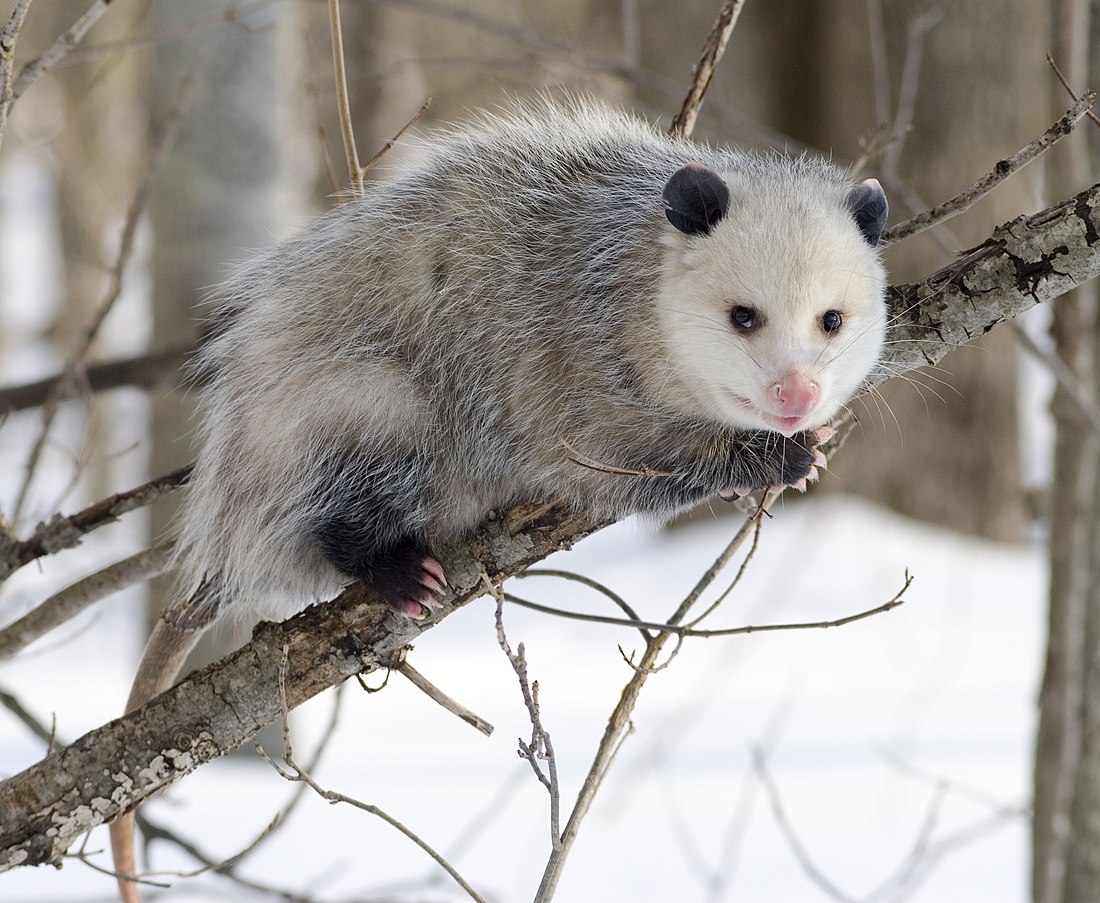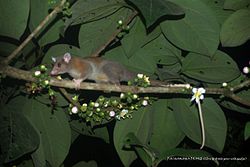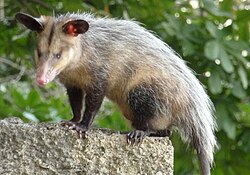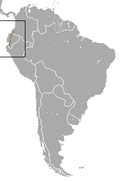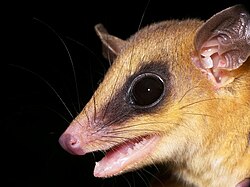Top Qs
Timeline
Chat
Perspective
List of didelphimorphs
Species in mammal order Didelphimorphia From Wikipedia, the free encyclopedia
Remove ads
Didelphimorphia is an order of marsupial mammals. Members of this order are called didelphimorphs, or opossums. They are primarily found in South America, though some are found in Central America and Mexico and one, the Virginia opossum, ranges into the United States and Canada. They have a variety of sizes, shapes, and fur patterns, and range in size from the 6 cm (2 in) (plus 9 cm (4 in) tail) Kalinowski's mouse opossum to the 55 cm (22 in) (plus 54 cm (21 in) tail) Virginia opossum. Didelphimorphs are primarily found in forests, as well as savannas, shrublands, and grasslands. Almost no population estimates have been made for didelphimorph species, though the one-striped opossum is classified as Critically Endangered with a population of less than ten, Handley's slender opossum is also critically endangered, and the red-bellied gracile opossum is extinct, having last been seen in 1962.

The 93 extant species of Didelphimorphia are grouped into a single family, Didelphidae, which is divided into four subfamilies: Caluromyinae, containing four species in two genera; Glironiinae, containing a single species; Hyladelphinae, also with a single species; and Didelphinae, containing 87 species split between 14 genera. Over one hundred extinct Didelphimorph species have been discovered, though due to ongoing research and discoveries the exact number and categorization is not fixed.[1]
Remove ads
Conventions
The author citation for the species or genus is given after the scientific name; parentheses around the author citation indicate that this was not the original taxonomic placement. Conservation status codes listed follow the International Union for Conservation of Nature (IUCN) Red List of Threatened Species. Range maps are provided wherever possible; if a range map is not available, a description of the didelphimorph's range is provided. Ranges are based on the IUCN Red List for that species unless otherwise noted. All extinct species or subspecies listed alongside extant species went extinct after 1500 CE, and are indicated by a dagger symbol "†".
Remove ads
Classification
Summarize
Perspective
The order Didelphimorphia consists of one family, Didelphidae, which is divided into the subfamilies Caluromyinae, Glironiinae, Hyladelphinae, and Didelphinae. Caluromyinae contains 4 species in 2 genera, Glironiinae and Hyladelphinae each contain a single species, and Didelphinae contains 87 species in 14 genera, as well as the extinct red-bellied gracile opossum, which was last seen in 1962. Many of these species are further subdivided into subspecies. This does not include hybrid species or extinct prehistoric species.[2][3]
Family Didelphidae
- Subfamily Caluromyinae
- Genus Caluromys (woolly opossums): three species
- Genus Caluromysiops (black-shouldered opossum): one species
- Subfamily Didelphinae
- Genus Chacodelphys (Chacoan pygmy opossum): one species
- Genus Chironectes (water opossum): one species
- Genus Cryptonanus (slender mouse opossums): five species (one extinct)
- Genus Didelphis (large American opossums): six species
- Genus Gracilinanus (gracile opossums): six species
- Genus Lestodelphys (Patagonian opossum): one species
- Genus Lutreolina (lutrine opossums): two species
- Genus Marmosa (mouse opossums): seventeen species
- Genus Marmosops (slender opossums): seventeen species
- Genus Metachirus: (brown four-eyed opossums): two species
- Genus Monodelphis (short-tailed opossums): seventeen species
- Genus Philander (gray and black four-eyed opossums): five species
- Genus Thylamys (fat-tailed mouse opossums): nine species
- Genus Tlacuatzin (gray mouse opossums): one species
- Subfamily Glironiinae
- Genus Glironia (bushy-tailed opossum): one species
- Subfamily Hyladelphinae
- Genus Hyladelphys (Kalinowski's mouse opossum): one species
Remove ads
Didelphimorphs
Summarize
Perspective
The following classification is based on the taxonomy described by Mammal Species of the World (2005), with augmentation by generally accepted proposals made since using molecular phylogenetic analysis, as supported by both the IUCN and the American Society of Mammalogists.[4][5]
Subfamily Caluromyinae
Subfamily Didelphinae
Subfamily Glironiinae
Subfamily Hyladelphinae
Remove ads
References
Sources
Wikiwand - on
Seamless Wikipedia browsing. On steroids.
Remove ads
